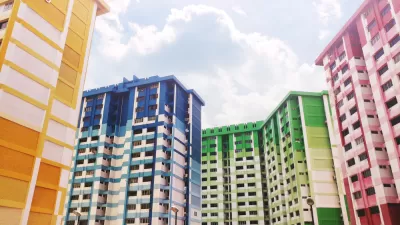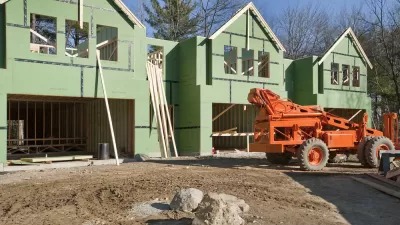As part of a series of editorials outlining the priorities President Obama should tackle in his second term, The New York Times looks at how the federal government could help support the increasing number of American's in need of housing assistance.
With "nearly nine million households teetering on the verge of homelessness," and recent congressional cutbacks to the nation's key federal programs for providing affordable housing, "[t]he administration obviously needs to do better" to relieve the country's crisis in affordable housing. Public housing needs have "grown significantly" during the recession. "Last year, for example, 8.5 million very-low-income families without housing assistance paid more than half their incomes for housing — an increase of 43 percent from 2007. These families skimp on food and medical care to make the rent and tend to move often, making it difficult for their children to be successful at school. They are also more prone to homelessness, which is traumatic for them and extremely costly for the municipalities that run shelters."
Yet the deepening crisis has flown beneath the administration radar thus far. "President Obama’s budget for the 2013 fiscal year is not much of an improvement; given inflation, Congress would have to increase appropriations just to keep treading water, when, in fact, what the poor in this country need is a significant jump."
The Times editors make note of several policy changes that could help bolster the main federal programs design to help low-income families find housing - "traditional public housing, for which the government provides operating expenses, plus two different programs under Section 8 of the housing law, in which rents are subsidized in privately owned properties."
FULL STORY: The Affordable Housing Crisis

Planetizen Federal Action Tracker
A weekly monitor of how Trump’s orders and actions are impacting planners and planning in America.

Maui's Vacation Rental Debate Turns Ugly
Verbal attacks, misinformation campaigns and fistfights plague a high-stakes debate to convert thousands of vacation rentals into long-term housing.

San Francisco Suspends Traffic Calming Amidst Record Deaths
Citing “a challenging fiscal landscape,” the city will cease the program on the heels of 42 traffic deaths, including 24 pedestrians.

Amtrak Rolls Out New Orleans to Alabama “Mardi Gras” Train
The new service will operate morning and evening departures between Mobile and New Orleans.

The Subversive Car-Free Guide to Trump's Great American Road Trip
Car-free ways to access Chicagoland’s best tourist attractions.

San Antonio and Austin are Fusing Into one Massive Megaregion
The region spanning the two central Texas cities is growing fast, posing challenges for local infrastructure and water supplies.
Urban Design for Planners 1: Software Tools
This six-course series explores essential urban design concepts using open source software and equips planners with the tools they need to participate fully in the urban design process.
Planning for Universal Design
Learn the tools for implementing Universal Design in planning regulations.
Heyer Gruel & Associates PA
JM Goldson LLC
Custer County Colorado
City of Camden Redevelopment Agency
City of Astoria
Transportation Research & Education Center (TREC) at Portland State University
Jefferson Parish Government
Camden Redevelopment Agency
City of Claremont





























